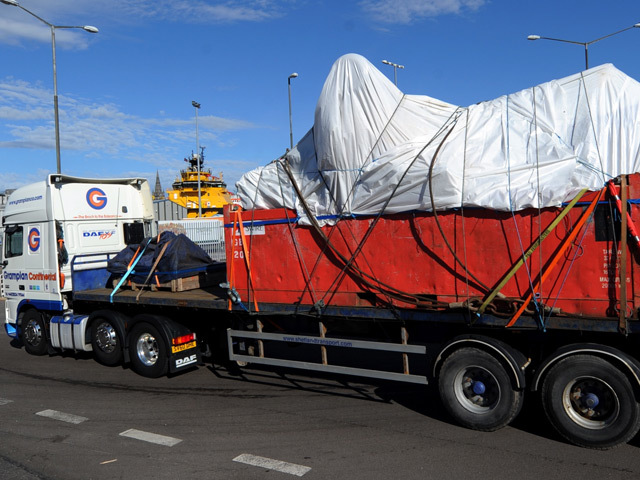
The main body of the crashed Super Puma helicopter arrived at Aberdeen Harbour yesterday.
The wreckage of the doomed AS322 L2 was taken ashore at around 7am after spending a week in the water off the coast of Shetland.
From Aberdeen, it was transported to the Air Accidents Investigation Branch (AAIB) headquarters in Farnborough in Hampshire where it will undergo vigorous testing and examination.
The gear box, rotor head, both engines and parts of the main frame were recovered earlier this week, as well as the helicopter’s black box after divers spent days searching for it in rough seas.
Following the major break through, investigators yesterday stepped up their probe to find out what vital clues the device contains.
A spokesman for the AAIB said it was impossible to say how long it would take until they were able to retrieve the data they needed.
Despite the AAIB revealing that they do not know what caused the helicopter to plunge into the sea, the decision to ground all Super Puma flights was lifted on Thursday night.
READ MORE:
Survivor tells how Super Puma ‘filled with water in 10 seconds’
Union wants guarangee for wokers after helicopter fleet reinstated
Timeline: How the Super Puma tragedy unfolded
The surprise move came as the oil sector’s helicopter safety group said there was no evidence that mechanical failure caused the fatal crash.
Bob Crow, general secretary of the RMT transport union, said he supported the decision to return the Super Pumas to service in light of the evidence available.
“We agree with the decision and we’ve been party to this decision,” he said.
“We’ve looked at all the evidence. You’ve got to weigh up the pressures on individuals who are stranded on rigs and want to get back, or who have been away from work for two to three weeks.”
Recommended for you
